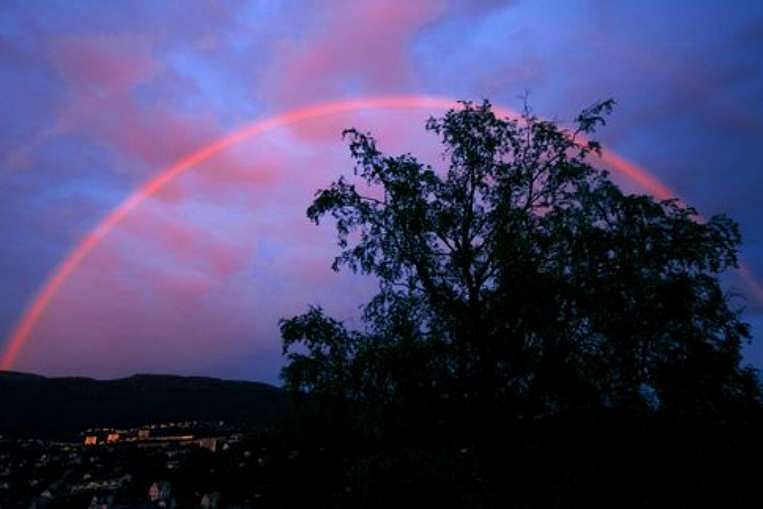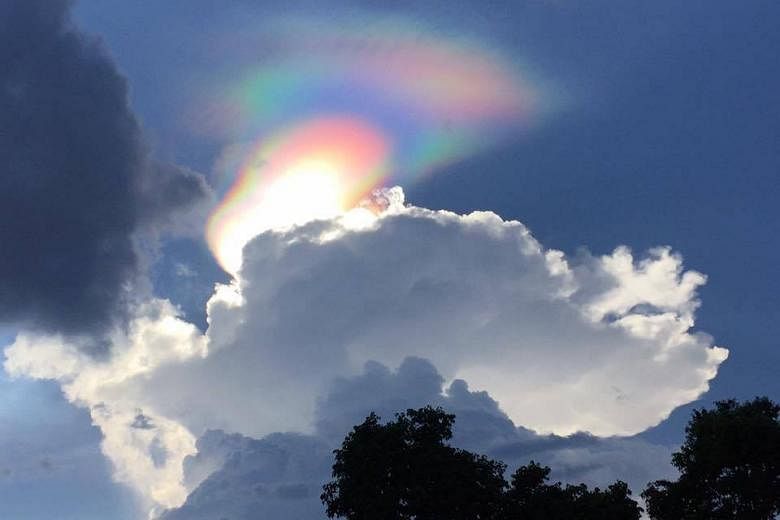SINGAPORE - It's been called a fire rainbow and likened to Paddle Pop, and the colourful sighting on Monday (Feb 20) afternoon has taken social media by storm.
A fire rainbow, also known as a circumhorizontal arc, is formed when sunlight passes through and is refracted by ice crystals in high-altitude cirrus clouds.
Some said that it could also be an iridescent cloud, which is a rainbow-like effect in clouds when light passes through tiny ice crystals or water droplets and is diffracted.
Here are four other types of rainbows which have brightened up the skies:
1. Double rainbow
Unlike how a rainbow is formed, a double rainbow appears when light is refracted not once, but twice, in a raindrop.
This causes the secondary rainbow - which is above the primary one - to have fainter colours which are in reverse order.
Singapore was treated to a picturesque display last month, when social media was flooded with pictures of a double rainbow.
Chinese culture considers a double rainbow auspicious and a reason for reflection and meditation.
2. Red rainbow

This type of rainbow is dominated by the primary colour red, with a slightly yellow band.
The main factor of a red rainbow's formation is said to be the height of the sun above the horizon.
When the sun is in a low position, the width of the blue and green bands of light decrease, while the width of the red band increases.
While red rainbows are not considered rare, they are harder to spot unless the background is dark.
3. Twinned rainbow

Arguably the more spectacular cousin of the double rainbow, a twinned rainbow consists of two arcs split from a single base rainbow.
The verdict is still out on the exact cause of a twinned rainbow, but researchers from San Diego used simulations in 2011 to puzzle it out.
Their conclusion was that sunlight needs to reflect off different sized raindrops.
4. Lunar rainbow

Also known as a moonbow, this rainbow gets its name from the moonlight which is refracted by water droplets in the air.
While it appears white in colour to the naked eye, viewing the rainbow using long exposure photography will reveal its colours.
Lunar rainbows are rarer than rainbows and usually form when there is a nearly full or full moon low in the sky.
In addition, water droplets in the air have to be in the opposite direction of the moon, with a dark sky for the moonbow to be observed.
SOURCES: LIVE SCIENCE, NATIONAL GEOGRAPHIC, NBC, TIME AND DATE, THE STRAITS TIMES, THE TELEGRAPH


